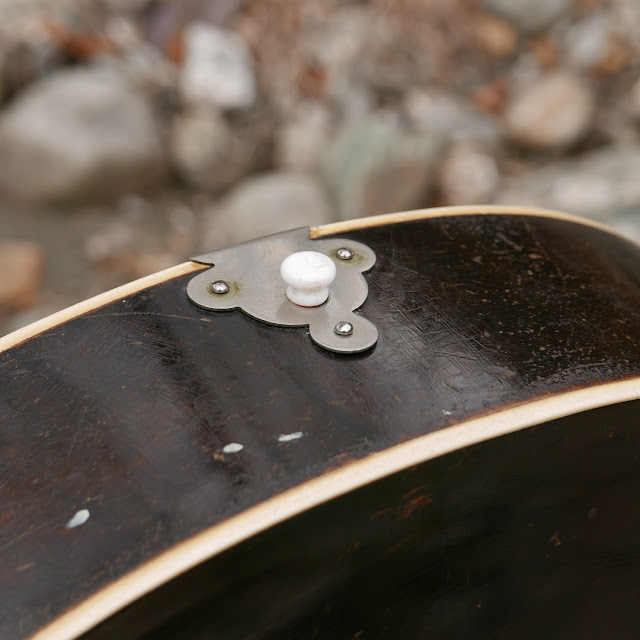1934 Gibson L-7 Carved-Top Archtop Guitar
A local customer brought this well-loved L-7 in after tempting me with the thought of it for months. It was owned by his father and before that a local bluesman. Beyond that, the history is murky. Still -- it's a fantastic guitar and was obviously played like mad. There's wear and tear all over, a giant crack on the top, and many smaller bumps, nicks, dings, and other signs of a take-everywhere instrument's life.
Per Gibson standards at the time, this is a 16" carved-spruce-top guitar with a carved-maple back and 3 1/4"-depth maple sides. It has the usual 24 3/4" scale length and the neck is a medium-bigger soft-V shape with a 12" radius fretboard and wider 1 3/4" nut width. It's a lot more "big slugger" than their later '30s (and early '40s) instruments which handle more like modern guitars.
Work for me included adding cleats to the already-"repaired" crack on the top, a fret level/dress, replacement binding at the top of the headstock and along the fretboard, a minor bit of modding to the bridge saddle/topper, and general cleaning and other minor adjustments. It plays with a straight neck, functioning truss rod, and 3/32" EA, 1/16" DGBE action at the 12th fret. The frets are a little low as they're the originals (and were well-grooved when this came in), but it's functionally spot-on and a lot of fun to play.
Like you'd expect from a higher-end Gibson carved-top guitar, the lows are velvety and rich and the upper-mids are thick and present. The treble is a little snappy but that could be the gauge of the strings -- I'd love to hear this with 13/17 on the top two as opposed to the 12/16 on it right now. It's also wearing a set of nickel-wrapped strings which, I think, suit this guitar pretty well.
This has some heavy finger-grooving on the fretboard but it doesn't detract from that eye-catching pearl.
The original bridge is ebony. Note that I've compensated its high B/E string slots.
The stain used on the carved-maple back is a very-dark "walnut" color.
These Grover tuners were a bit loose in attachment to the headstock, but shim-shim-shim solved that problem. They're nicer-grade units and work just fine.
While a shallow neck reset would've afforded a taller bridge, there's more than enough back-angle on the bridge to drive the top and the neck/fretboard extension were not having any out-of-alignment issues, so we left it as-is.
It's original, somewhat-mangled, hard case is still extant.






















Comments